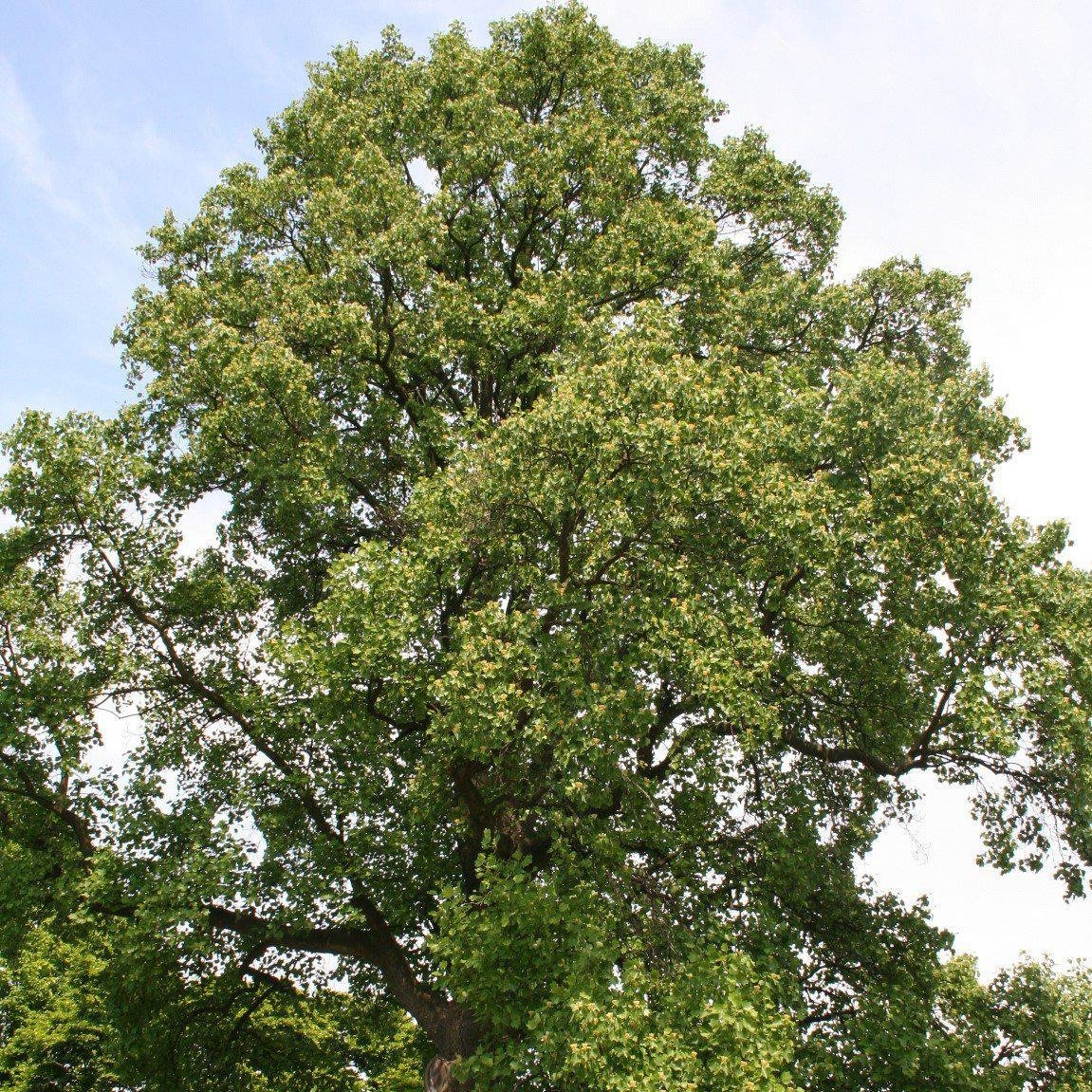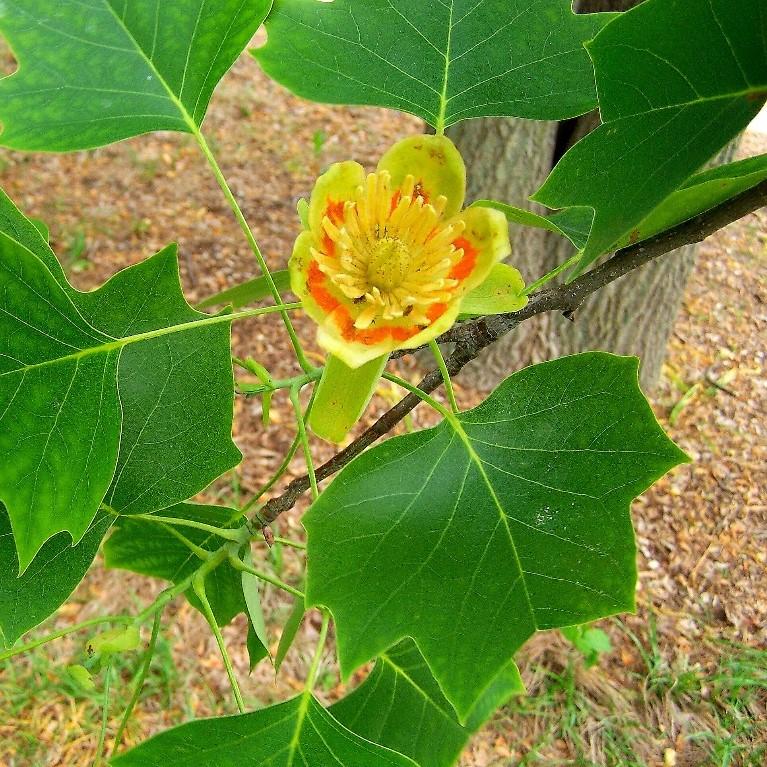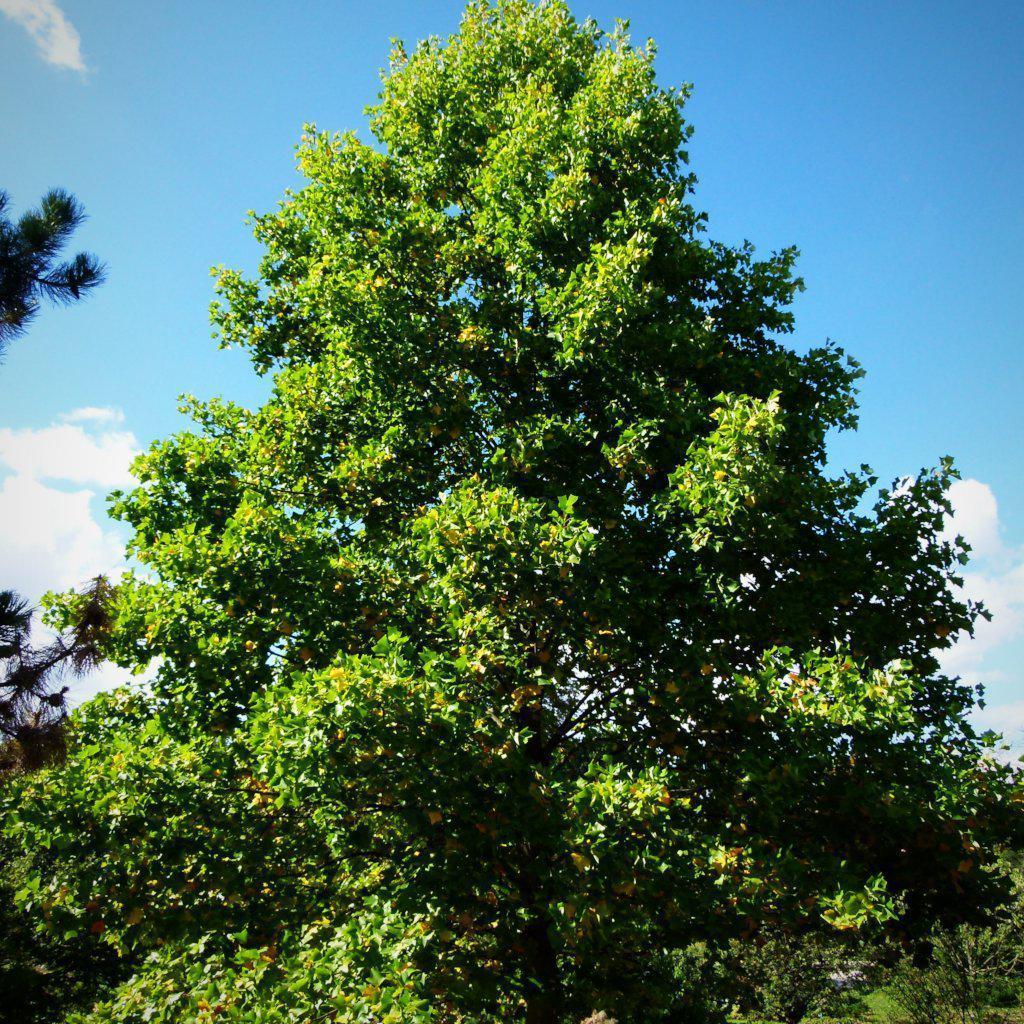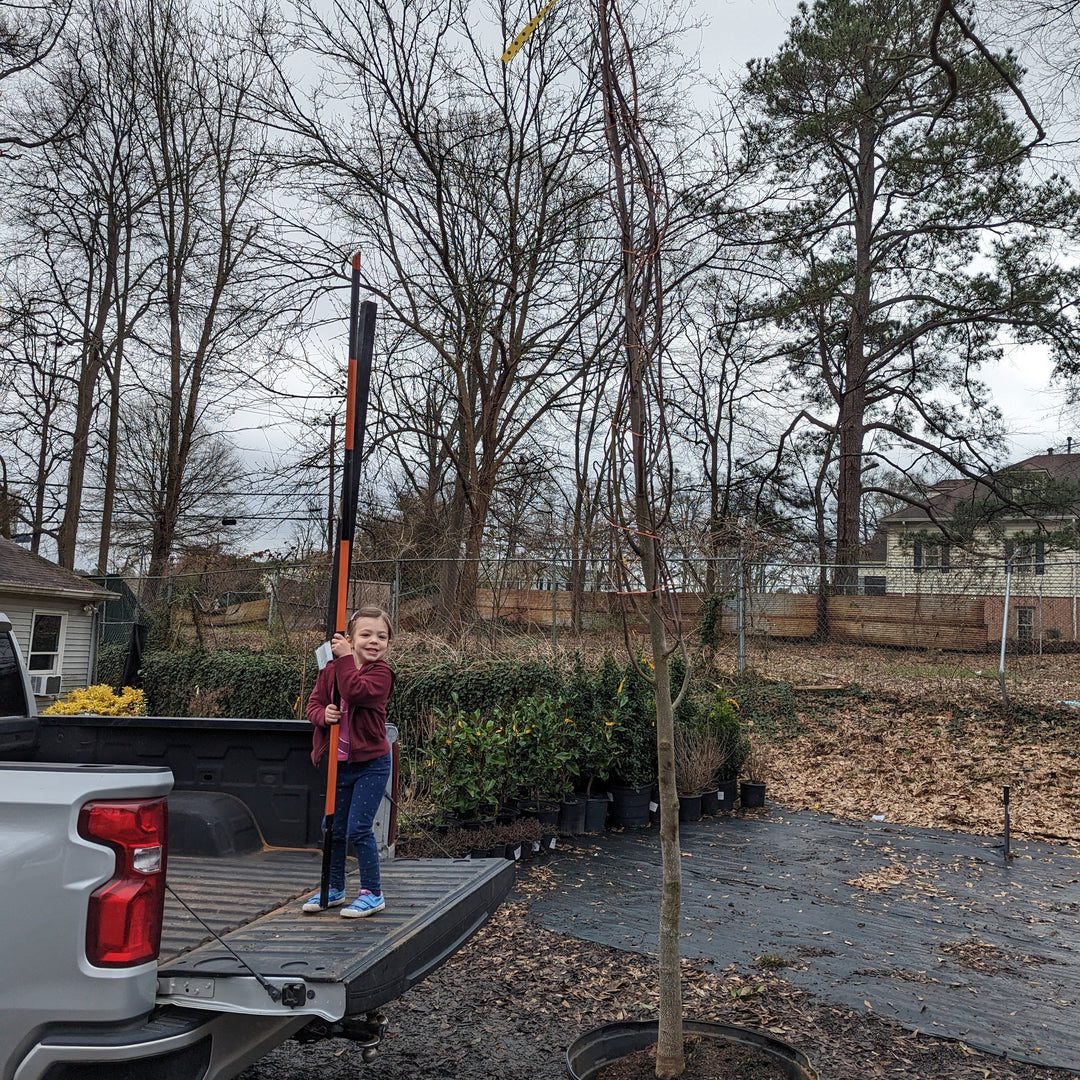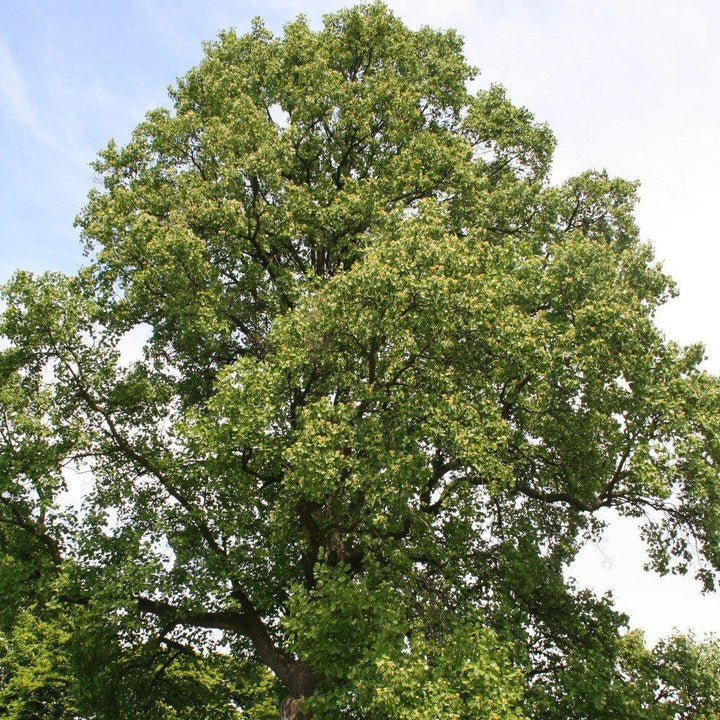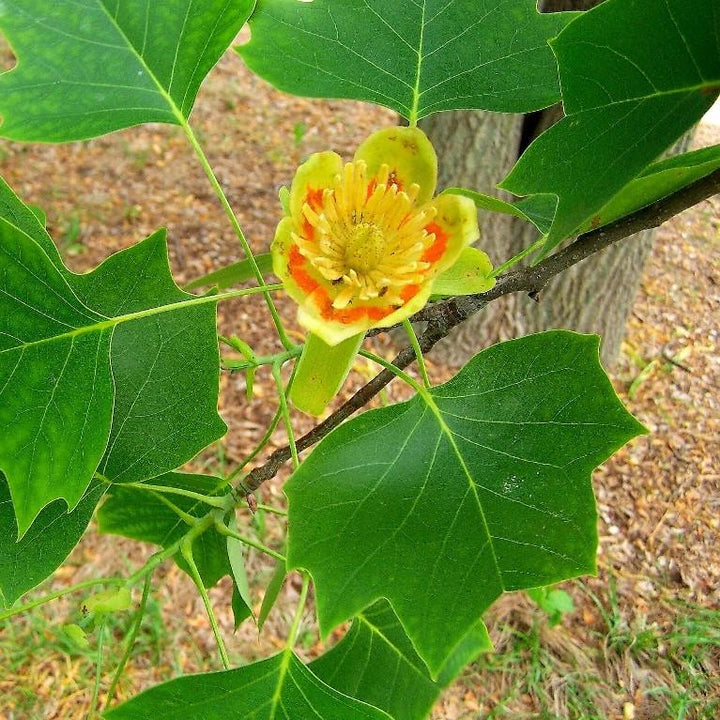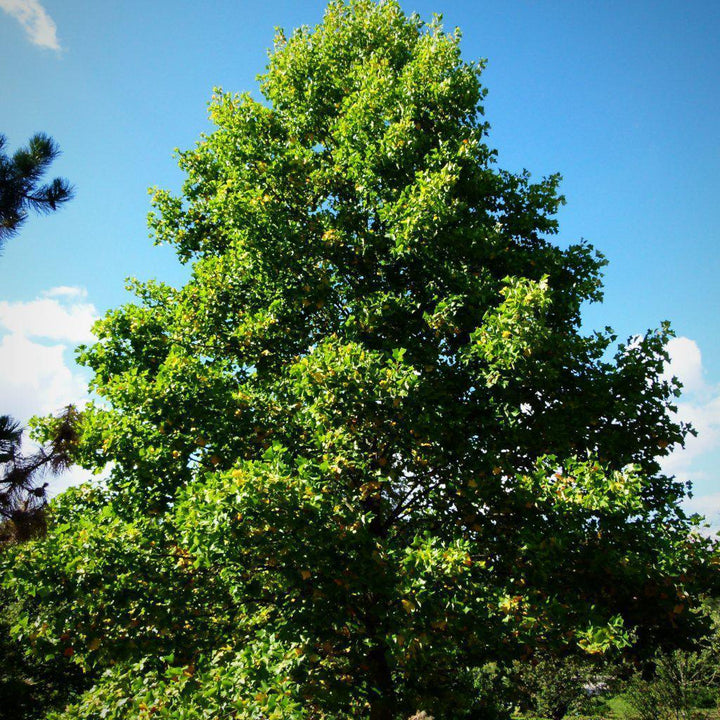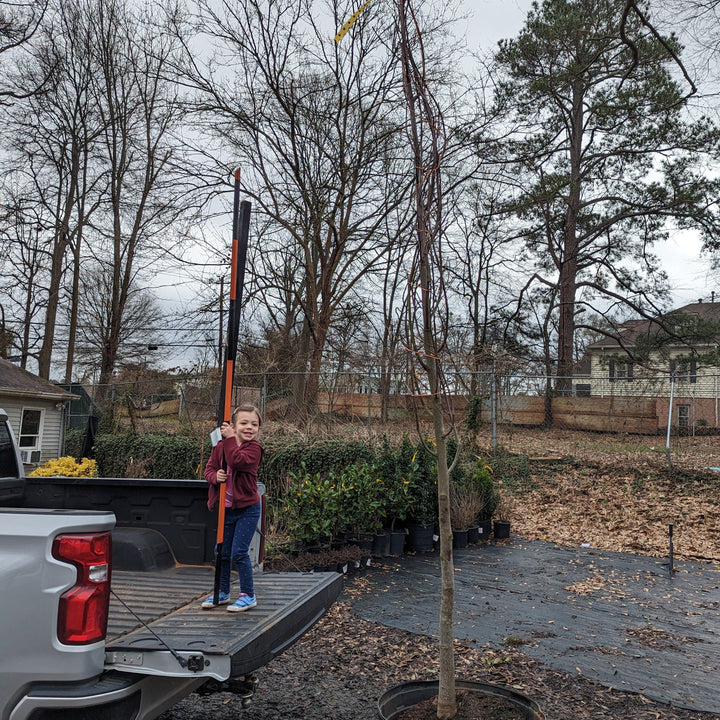Tulip Poplars are known for their tall and straight trunks, reaching heights of up to 90 feet (27 meters) or more. They have distinctively shaped leaves that resemble tulip flowers, hence the name. The leaves are bright green and turn golden yellow in the fall, creating a stunning display of color.
In addition to its beautiful foliage, the Tulip Poplar produces unique flowers. The flowers are yellow-green with orange markings and are shaped like tulips, hence the name "tulipifera." These flowers bloom in late spring or early summer and are a favorite among pollinators, such as bees and butterflies.
Tulip Poplars prefer full sun to partial shade and well-drained soil. They are relatively low-maintenance trees and can tolerate a wide range of soil conditions. However, they do require regular watering, especially during dry periods.
|
Type: |
|
|
Origins: |
Eastern N. America; GA Native |
|
Height: |
40' - 90' |
|
Spread: |
30’ - 50' |
|
Spacing: |
40' |
|
USDA Hardiness Zone: |
4 - 9 |
|
Culture: |
|
|
Bloom Color: |
Yellow |
|
Season of Interest: |
MAINTENANCE NEEDS: Low Maintenance. Water Regularly. Watch for aphids and scale, as well as wild, mold, mildew or canker. Susceptible to limb breakage in heavy ice/snow or high winds.
LANDSCAPE USES: Accents or Group Plantings, Borders, Shade Garden, Privacy Screen.
COMPANION PLANTS: Flowering Cherry, Chinese Pistachio, Cedar
IMAGE: Jean-Pol GRANDMONT, Liriodendron tulipifera (arbre) - Laeken, CC BY 3.0
IMAGE: Bruce Marlin, Liriodendron tulipifera, CC BY-SA 3.0
IMAGE: Dinkum, Liriodendron tulipifera 3, CC0 1.0


